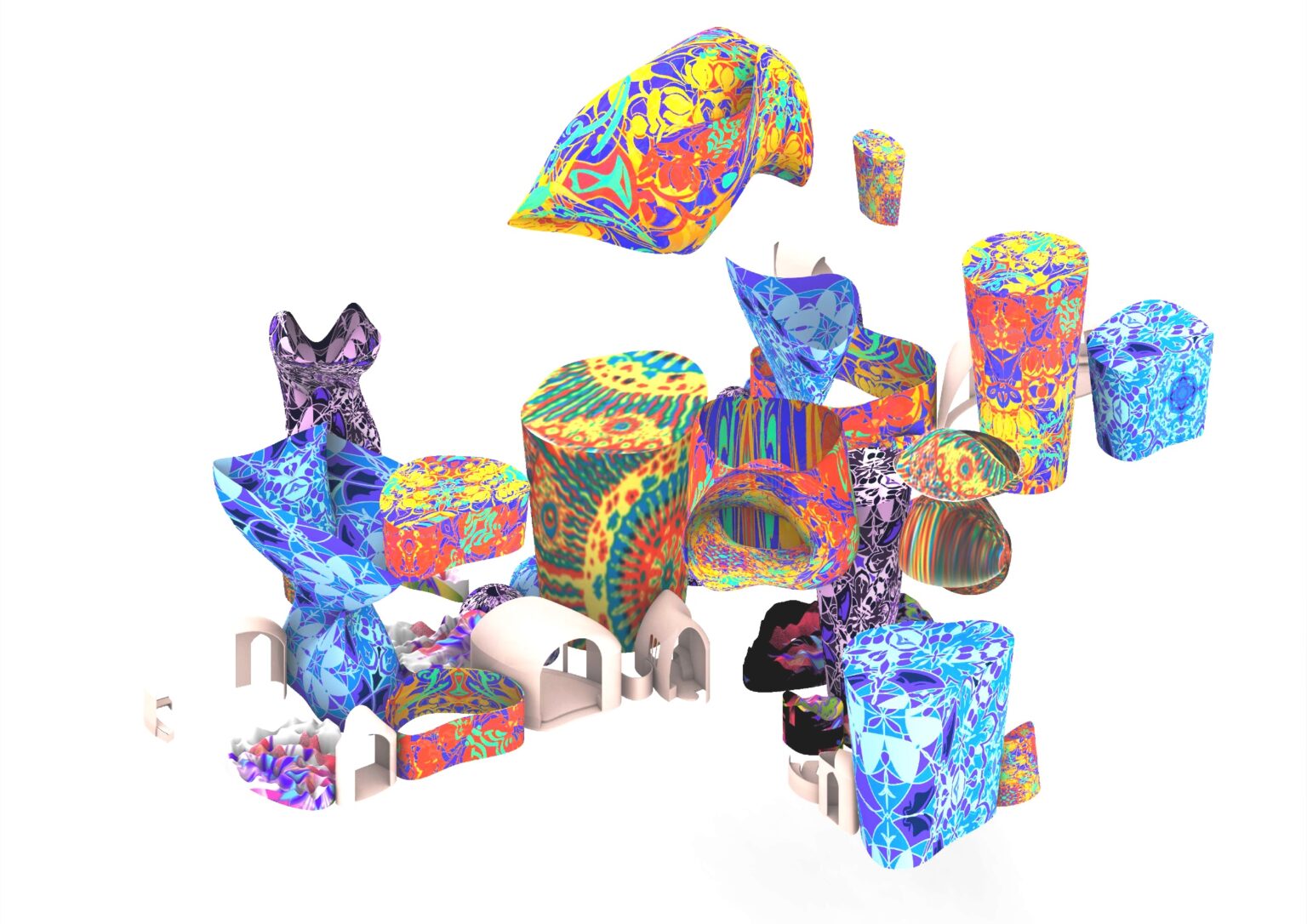Xinran Zhao

Xinran Zhao
As a student interior designer, I believe that the structure of buildings and interiors is determined by human activities and human needs. I have also been exploring how to Relatively objectively construct a completely human-oriented interior design through corresponding human activities. At the same time, I am also very interested in making brightly colored illustrations and trendy elements such as anime, which often appear in my designs.
In my personal project “The Cocoon of Non-place”, I explored the causes and impacts of the phenomenon of “information cocoon room” generated by Internet social media platforms. I use a relatively objective perspective to reconstruct this phenomenon in interior design, and the final design is a public activity space partially hidden in the virtual world by means of “augmented reality”. During the gradual formation of this project, I kept asking related questions and trying to describe or solve these questions in my project. I tried to use the idea of squeezed bubbles to represent the compressed personal space, so as to promote communication between people, hoping that people can have more comfortable communication in real life as on the Internet. I use Surprisingly contrasting visual effects to construct a fantasy world in the virtual world, Trying to show people the abstract expression of dazzling social media platforms.
Projects

Xinran Zhao
The Cocoon of Non-place
I have always believed that the birth of a space is related to people’s needs and activities, and people’s activities and thinking need corresponding spaces. Thinking about shrinking public space and growing social media network platforms inspired my research question: What is the connection between the real world and social media networks? How can this be represented in the way of interior design?
First I investigated some social media related issues. I chose to target the phenomenon of “information cocoons” in social media. (“Information cocoon room” is because the algorithm of the social media platform will recommend different information for each user according to the user’s personal choice and big data user portrait, and the source of the user’s acceptance of information is limited. It may cause people to only I can receive news that I am interested in or a point of view that is consistent with myself.) I try to describe this phenomenon in reality as objectively as possible using interior design. Try to create a space to abstractly express social media platforms in reality. Use this to push people to have the same comfortable communication space in real life as they do on social media.
So I started looking for connections between the real world and the online world. For example, street performances can be uploaded to video sites for viewing. I learned about a kind of space called non-places, that is, there is no specific function, and it only assumes the type of space that only exists, such as passage. I think the definition of this space can also be found on social media, which is the home page of the social app. Users can choose which space to enter according to the cover, so I chose the real non-places at the crossroads of this commercial pedestrian street as my site. At the same time, I decided to use a modular design and divide the space into small units for design.

case study

how TO DESIGN THE PLAN

HOW I DESIGN THE STRUCTURE















